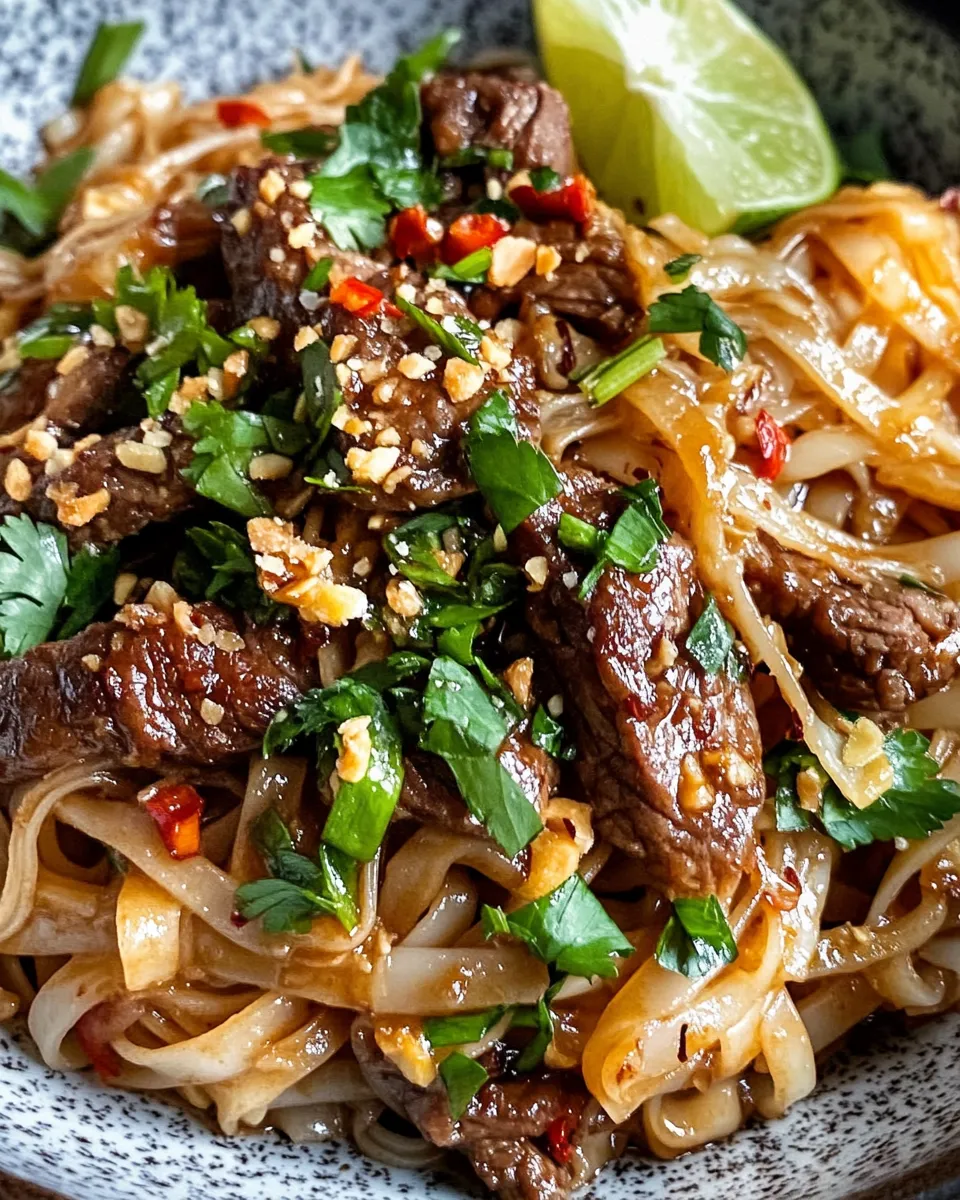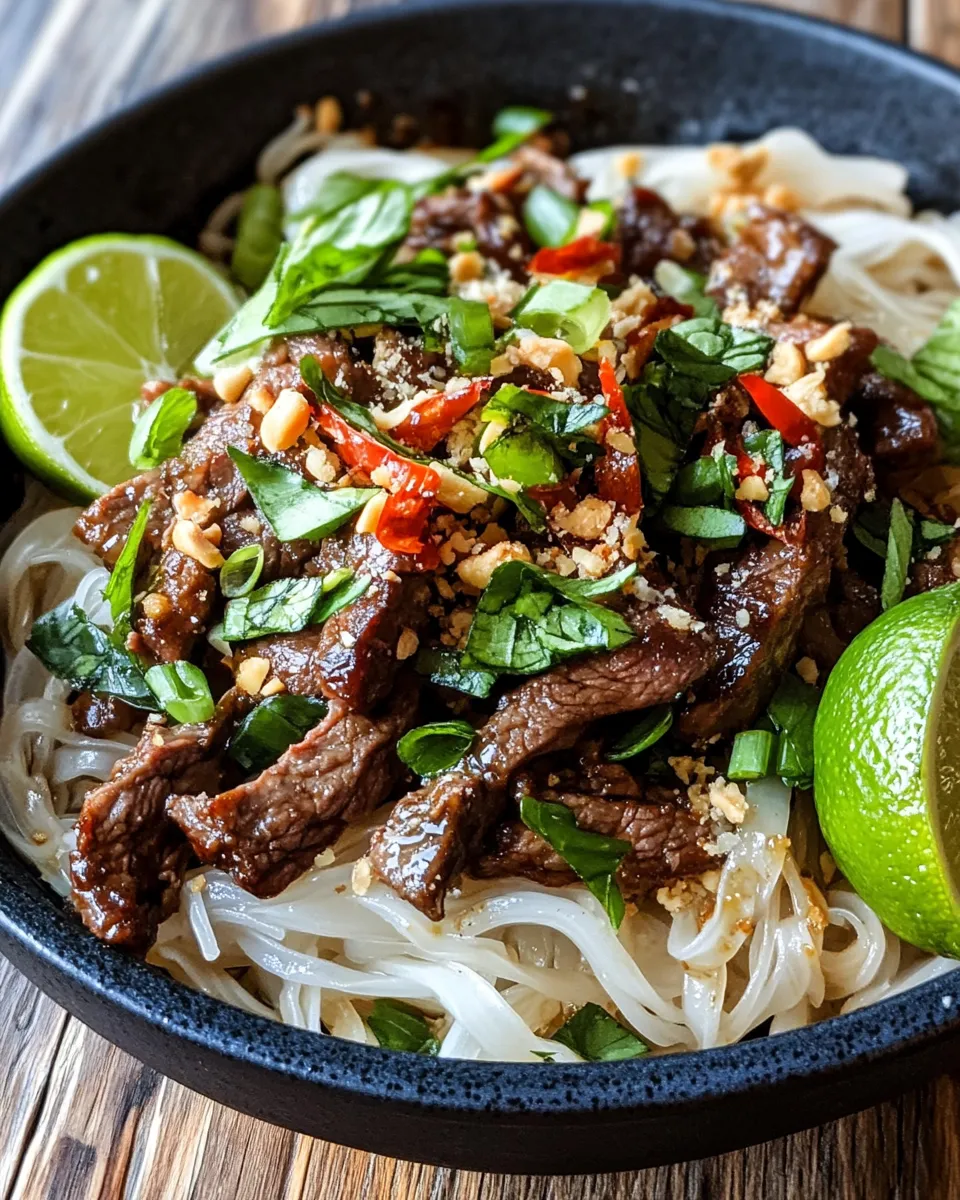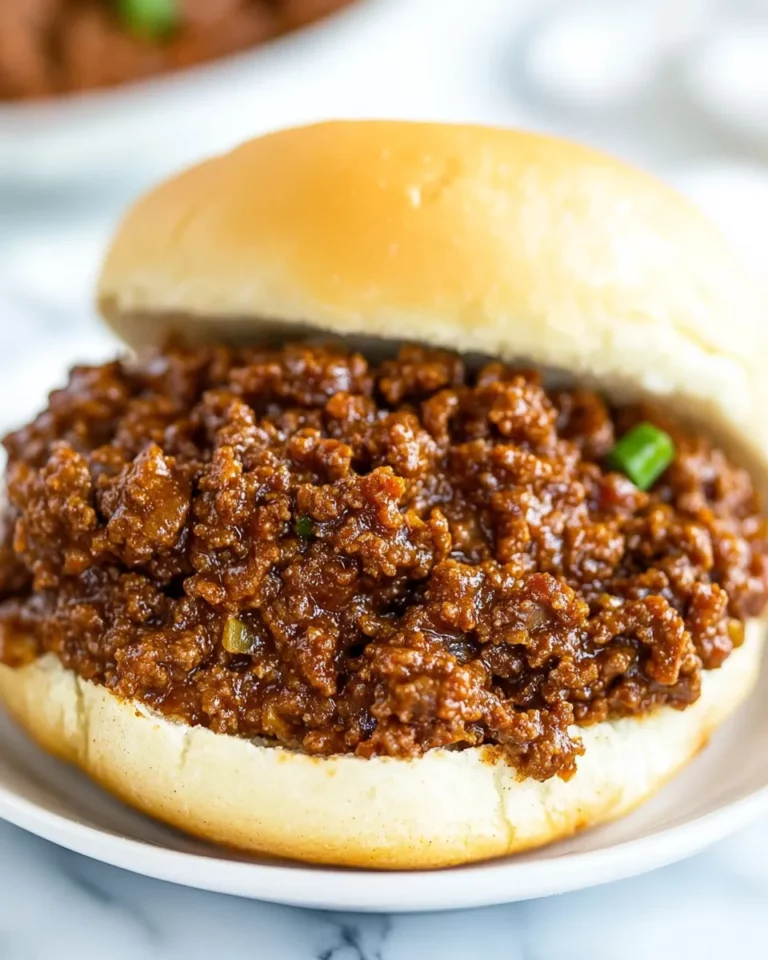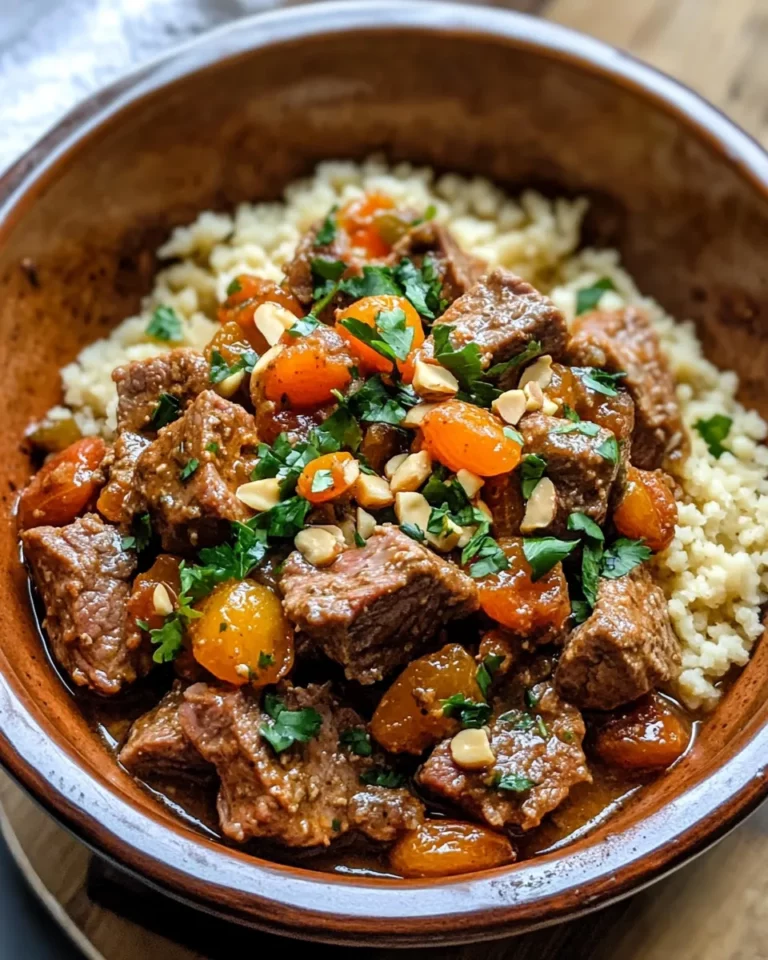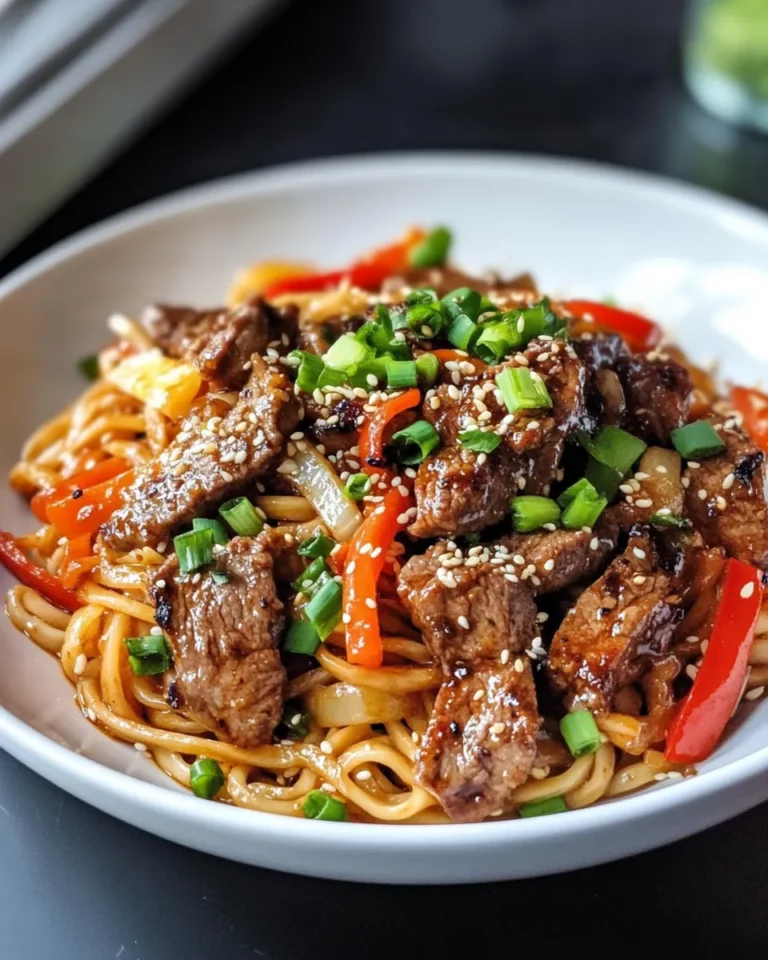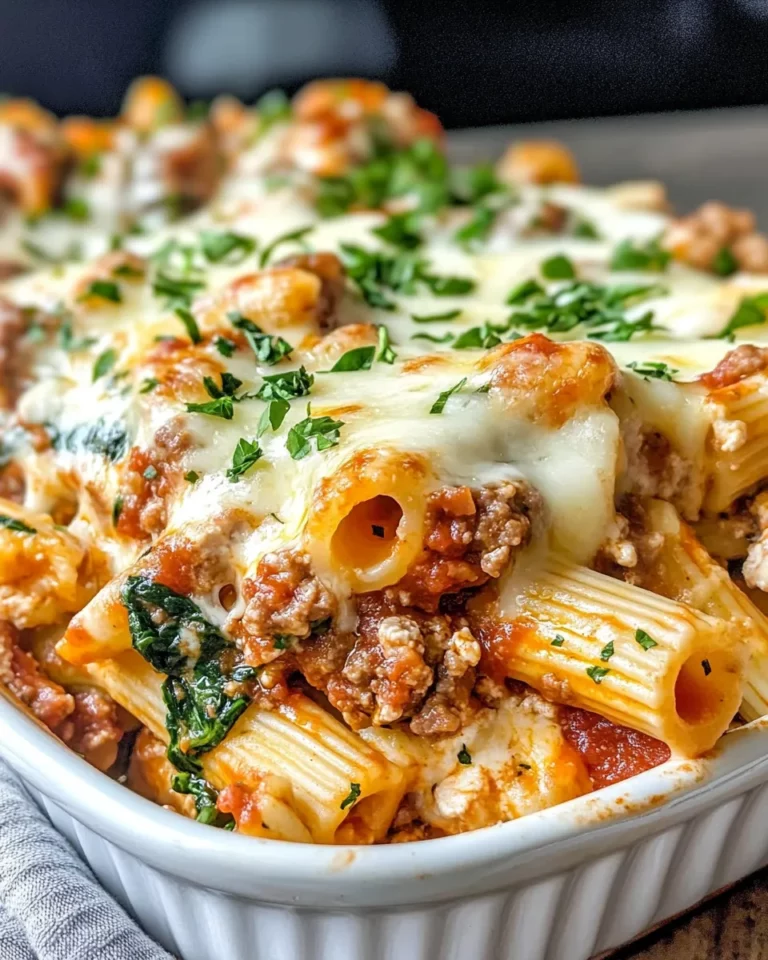Thai Basil Beef With Rice Noodles
If you’re craving a vibrant, flavor-packed dinner that comes together in a flash, this Thai Basil Beef With Rice Noodles recipe is your new go-to. Tender slices of beef sirloin marry beautifully with the aromatic punch of Thai basil and the subtle heat from bird chilies, all tossed with silky rice noodles. It’s a one-pan wonder that brings authentic Bangkok street food vibes right to your kitchen. Whether you’re whipping it up for a quick weeknight meal or impressing guests with something exotic yet approachable, this dish checks all the boxes for flavor, texture, and ease.
What Sets This Recipe Apart
This Thai Basil Beef With Rice Noodles recipe stands out because it balances bold, savory flavors with fresh herbs and a touch of sweetness, creating a truly irresistible harmony. The use of Thai bird chilies provides authentic heat without overwhelming the palate, while the trio of soy sauce, oyster sauce, and fish sauce layers umami complexity. Unlike other noodle dishes that rely on heavy sauces or deep frying, this stir-fry is light, fresh, and quick to make. The addition of rice noodles instead of traditional jasmine rice adds a delightful chew and soaks up every bit of the flavorful sauce, making each bite a perfect mix of textures. Plus, the fresh Thai basil leaves added at the end bring a fragrant, peppery lift that’s signature to Thai cuisine.
Gather These Ingredients
- 8 ounces rice noodles – soak or cook according to package instructions for tender, chewy noodles
- 1 pound beef sirloin, thinly sliced – choose a lean cut for tenderness and quick cooking
- 2 tablespoons vegetable oil – for stir-frying
- 4 cloves garlic, minced – fresh garlic amps up the savory notes
- 2 Thai bird chilies, chopped (adjust to taste) – these bring authentic heat and flavor
- 2 tablespoons soy sauce – for salty depth
- 1 tablespoon oyster sauce – adds a rich, slightly sweet umami kick
- 1 tablespoon fish sauce – essential for that classic Thai savory punch
- 1 tablespoon brown sugar – balances the saltiness with a touch of sweetness
- 1 cup fresh Thai basil leaves – stir in at the end for fragrance and color
- 2 green onions, sliced – for freshness and mild onion flavor
- Lime wedges – to squeeze on top for bright acidity
Must-Have Equipment
- Large skillet or wok – essential for high-heat stir-frying to get that perfect sear on your beef
- Mixing bowls – for marinating and prepping ingredients
- Sharp knife – for thinly slicing your sirloin and chopping herbs and chilies
- Colander – to drain your rice noodles once cooked or soaked
- Tongs or chopsticks – to toss the noodles and beef together without breaking them
Thai Basil Beef With Rice Noodles in Steps
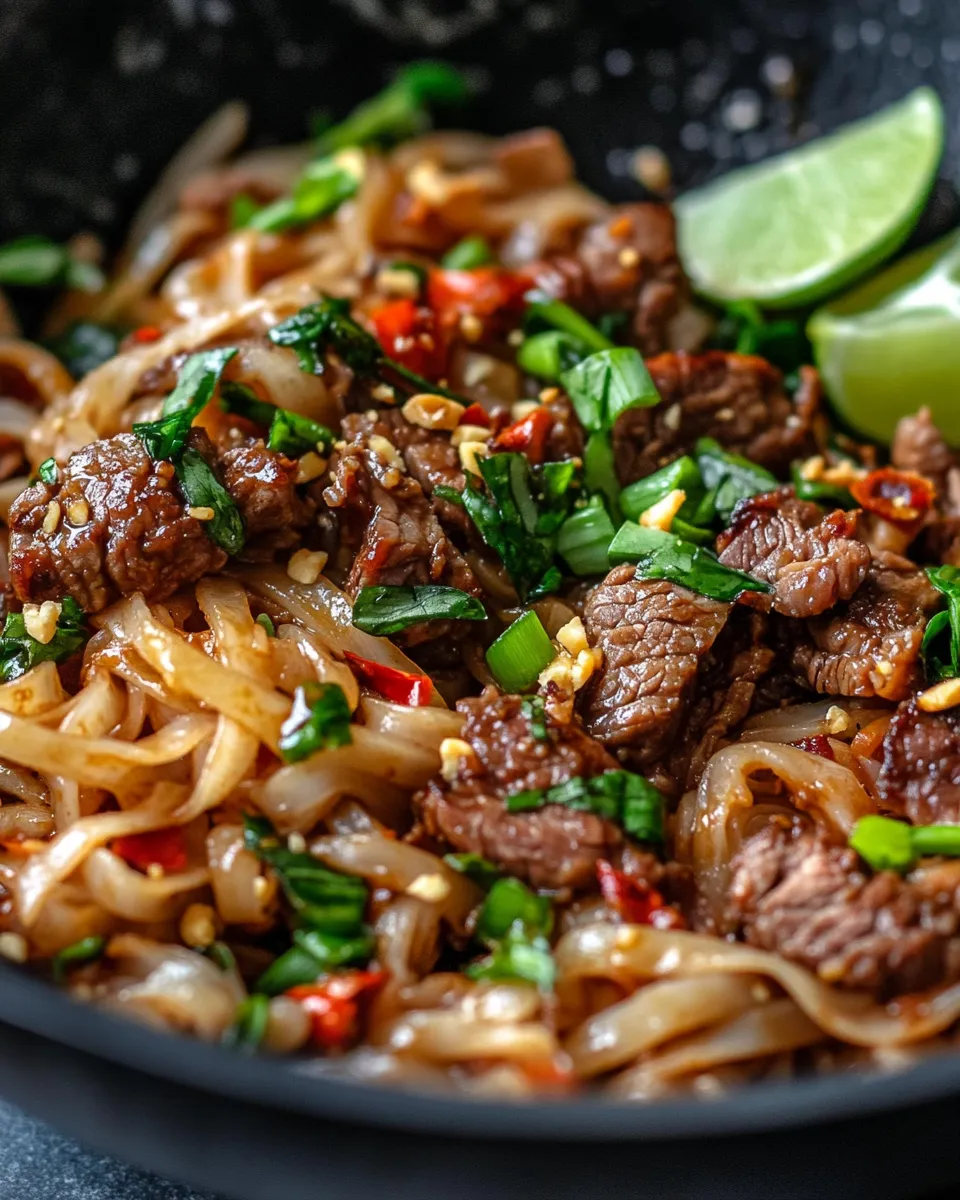
Step 1: Prepare Your Rice Noodles
Start by soaking or cooking your rice noodles according to the package instructions. Once tender, drain and set aside. If soaking, make sure they’re softened but not mushy—these noodles will finish cooking in the stir-fry.
Step 2: Marinate the Beef
In a bowl, toss the thinly sliced beef sirloin with 1 tablespoon soy sauce and a pinch of brown sugar. Let it sit for 10 minutes while you prep the other ingredients. This brief marination helps tenderize the beef and infuses it with flavor.
Step 3: Stir-Fry the Aromatics
Heat 2 tablespoons vegetable oil in your skillet or wok over medium-high heat. Add the minced garlic and chopped Thai bird chilies, stirring quickly until fragrant—about 30 seconds. This step releases their essential oils, building the base for your sauce.
Step 4: Cook the Beef
Add the marinated beef to the pan in a single layer. Let it sear undisturbed for about 1 minute, then stir-fry until browned and just cooked through, about 2-3 minutes. Remove the beef and set aside to avoid overcooking.
Step 5: Build the Sauce
To the same pan, add 1 tablespoon soy sauce, oyster sauce, fish sauce, and brown sugar. Stir to combine and let it bubble for 1-2 minutes until slightly thickened and glossy.
Step 6: Toss Noodles and Beef Together
Return the beef to the pan along with the drained rice noodles. Toss everything together so the noodles are evenly coated in the sauce and heated through.
Step 7: Finish with Herbs and Garnishes
Turn off the heat and fold in the fresh Thai basil leaves and sliced green onions. The residual heat will wilt the basil perfectly without losing its vibrant flavor. Serve immediately with lime wedges on the side for squeezing over the top.
Make It Your Way
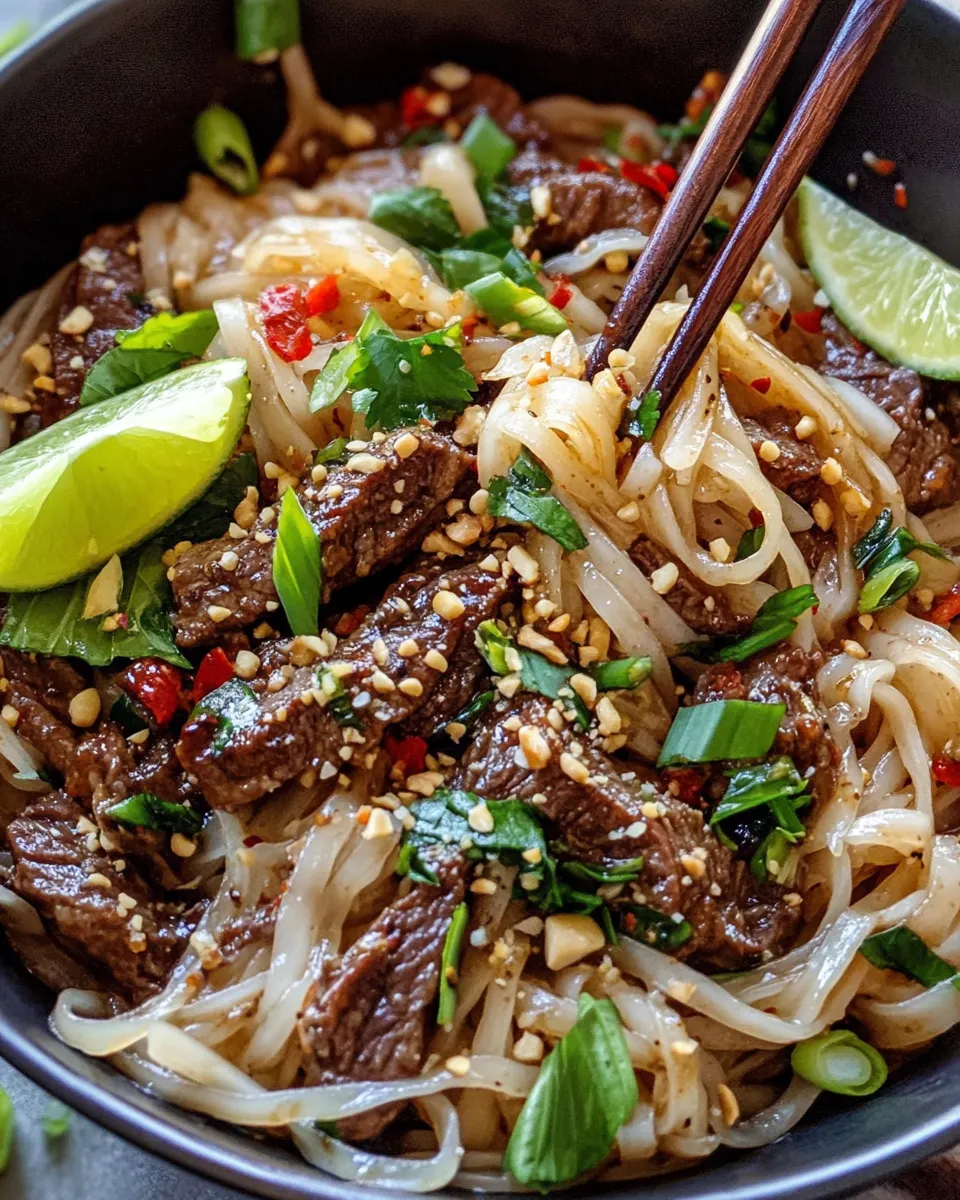
- Adjust the heat by reducing or increasing Thai bird chilies, or swap them for milder peppers if preferred.
- For a vegetarian twist, replace beef with firm tofu or mushrooms and use soy sauce instead of fish sauce.
- Add crunchy vegetables like bell peppers or snap peas to boost texture and color.
- Experiment with swapping fresh Thai basil for Homemade Basil Pesto for a fusion take that adds richness and creaminess.
Frequent Missteps to Avoid
- Overcooking the beef – sirloin cooks quickly; remove it from heat as soon as it’s browned to keep it tender.
- Using too much sauce – keep the sauce balanced so it doesn’t drown the noodles, ensuring a perfect coating instead.
- Not soaking the noodles properly – under-soaked rice noodles can break apart, while over-soaked ones become mushy.
- Skipping fresh herbs – fresh Thai basil is key to authentic flavor; dried herbs won’t deliver the same aromatic punch.
Shelf Life & Storage
This dish is best enjoyed fresh, but leftovers can be stored in an airtight container in the refrigerator for up to 2 days. Reheat gently in a skillet over medium heat, adding a splash of water or broth to loosen the sauce and prevent drying out. Avoid freezing, as the rice noodles may become mushy upon thawing.
Reader Q&A
Can I use a different cut of beef?
Absolutely! While sirloin is ideal for its tenderness and quick cooking, flank steak or ribeye can also work well. Just slice very thinly against the grain to keep the beef tender.
What can I substitute for fish sauce?
If you want to avoid fish sauce, try using additional soy sauce combined with a splash of Worcestershire sauce or mushroom sauce to mimic the umami depth.
How spicy is this dish?
The heat level depends on how many Thai bird chilies you use. Start with one if you’re sensitive to spice, and add more to taste. The chilies provide a sharp, fresh heat rather than heavy burning.
Can I prepare this recipe ahead of time?
You can prep the beef and sauce mixture in advance and store it in the fridge. Cook the noodles and stir-fry just before serving for the freshest taste and texture.
Next Up in Your Queue
- Try these zesty Sweet Chili Chicken Lettuce Wraps for a light, handheld meal.
- Warm up with a bowl of Spicy Pickled Cucumber Ramen Noodles that deliver a tangy, spicy punch.
- Learn how to make Homemade Basil Pesto for a versatile sauce that elevates countless dishes.
Hungry for More?
Dive into the world of bold, fresh flavors with dishes that celebrate vibrant herbs, spices, and simple techniques. Whether you love the heat of Thai cuisine or crave easy, flavorful weeknight meals, there’s always something new to explore. This Thai Basil Beef With Rice Noodles recipe is a perfect starting point to build your confidence in stir-frying and layering complex tastes with minimal fuss.
So, grab your skillet, gather those ingredients, and get ready to savor a dish that’s bursting with authentic Thai charm and irresistible comfort. Your taste buds will thank you!
Share on Pinterest
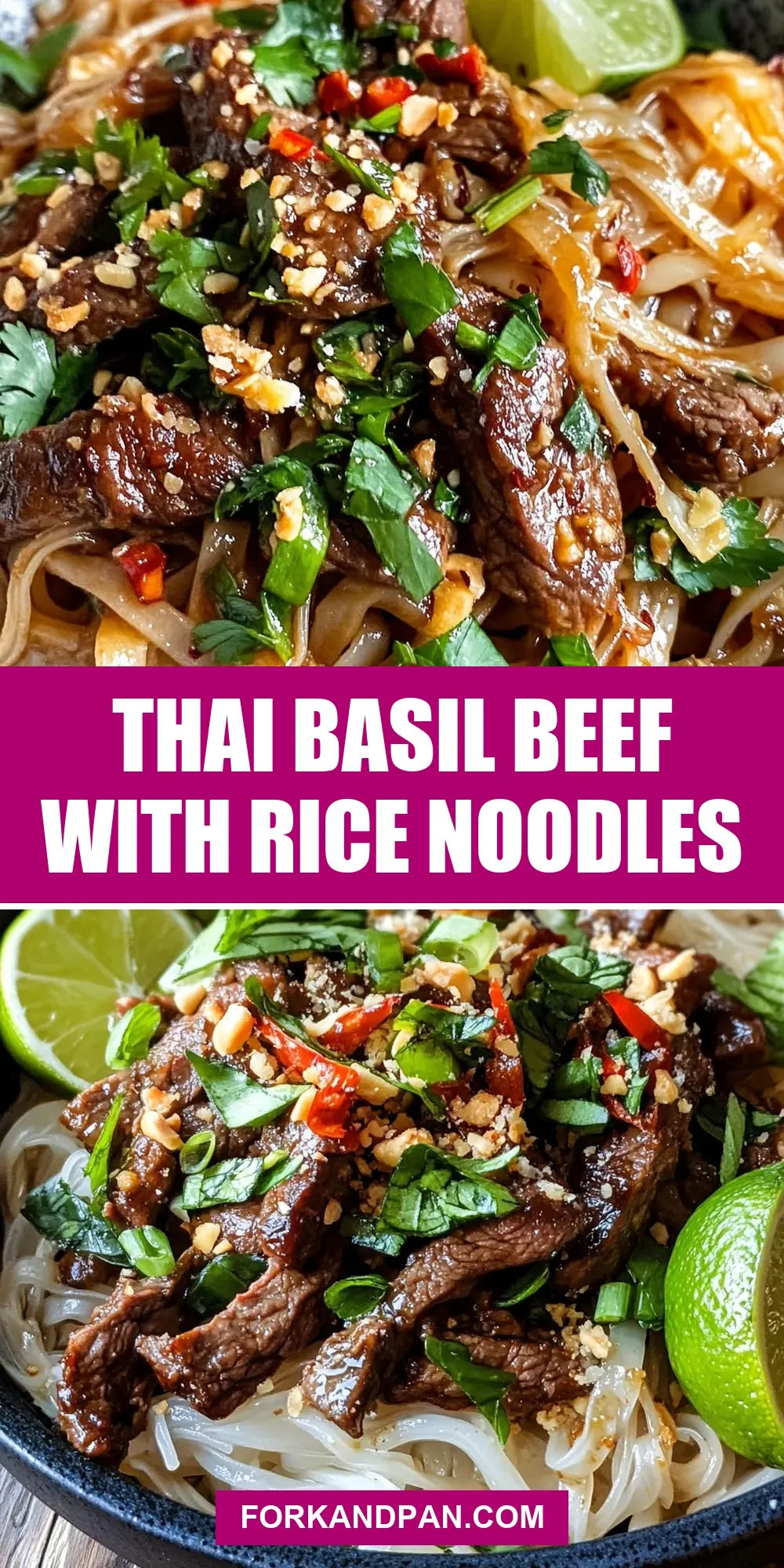

Thai Basil Beef With Rice Noodles
Ingredients
- 8 ounces rice noodles soak or cook according to package instructions for tender, chewy noodles
- 1 pound beef sirloin thinly sliced, choose a lean cut for tenderness and quick cooking
- 2 tablespoons vegetable oil for stir-frying
- 4 cloves garlic minced, fresh garlic amps up the savory notes
- 2 Thai bird chilies chopped (adjust to taste), bring authentic heat and flavor
- 2 tablespoons soy sauce for salty depth
- 1 tablespoon oyster sauce adds a rich, slightly sweet umami kick
- 1 tablespoon fish sauce essential for that classic Thai savory punch
- 1 tablespoon brown sugar balances the saltiness with a touch of sweetness
- 1 cup fresh Thai basil leaves stir in at the end for fragrance and color
- 2 green onions sliced, for freshness and mild onion flavor
- lime wedges to squeeze on top for bright acidity
Instructions
Prepare Your Rice Noodles
- Start by soaking or cooking your rice noodles according to the package instructions. Once tender, drain and set aside. If soaking, make sure they’re softened but not mushy—these noodles will finish cooking in the stir-fry.
Marinate the Beef
- In a bowl, toss the thinly sliced beef sirloin with 1 tablespoon soy sauce and a pinch of brown sugar. Let it sit for 10 minutes while you prep the other ingredients.
Stir-Fry the Aromatics
- Heat 2 tablespoons vegetable oil in your skillet or wok over medium-high heat. Add the minced garlic and chopped Thai bird chilies, stirring quickly until fragrant—about 30 seconds.
Cook the Beef
- Add the marinated beef to the pan in a single layer. Let it sear undisturbed for about 1 minute, then stir-fry until browned and just cooked through, about 2-3 minutes. Remove the beef and set aside to avoid overcooking.
Build the Sauce
- To the same pan, add 1 tablespoon soy sauce, oyster sauce, fish sauce, and brown sugar. Stir to combine and let it bubble for 1-2 minutes until slightly thickened and glossy.
Toss Noodles and Beef Together
- Return the beef to the pan along with the drained rice noodles. Toss everything together so the noodles are evenly coated in the sauce and heated through.
Finish with Herbs and Garnishes
- Turn off the heat and fold in the fresh Thai basil leaves and sliced green onions. The residual heat will wilt the basil perfectly without losing its vibrant flavor. Serve immediately with lime wedges on the side for squeezing over the top.
Equipment
- Large Skillet or Wok
- Mixing Bowls
- Sharp Knife
- Colander
- Tongs or chopsticks
Notes
- Adjust the heat by changing the amount of Thai bird chilies or substituting milder peppers.
- For a vegetarian version, swap beef for firm tofu or mushrooms and use soy sauce instead of fish sauce.
- Store leftovers in an airtight container in the fridge for up to 2 days; reheat gently with a splash of water.

